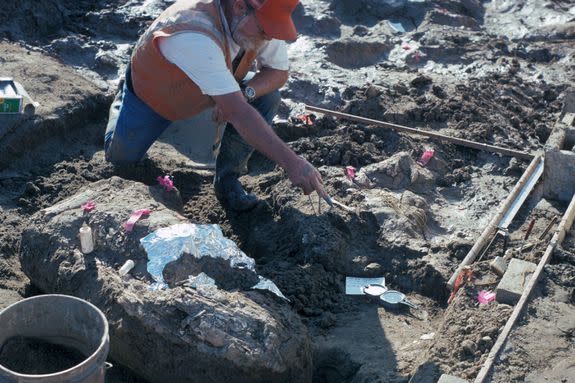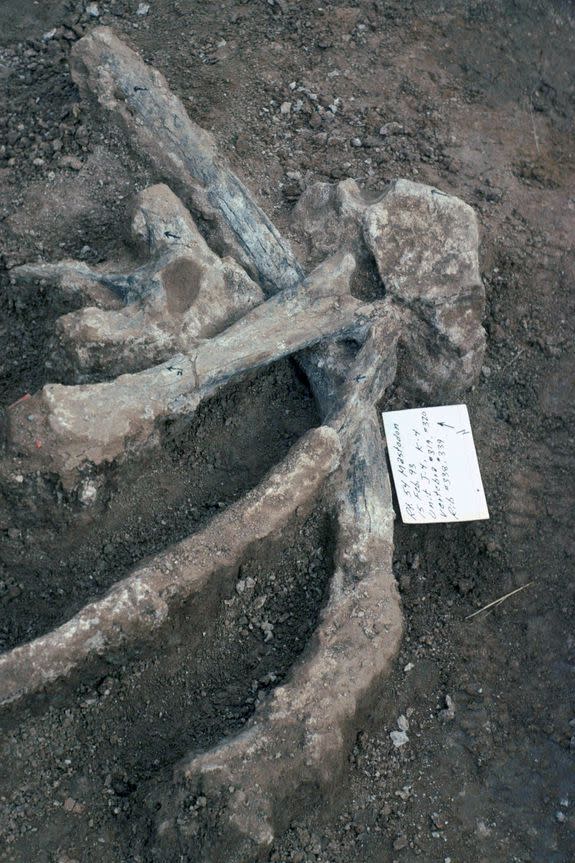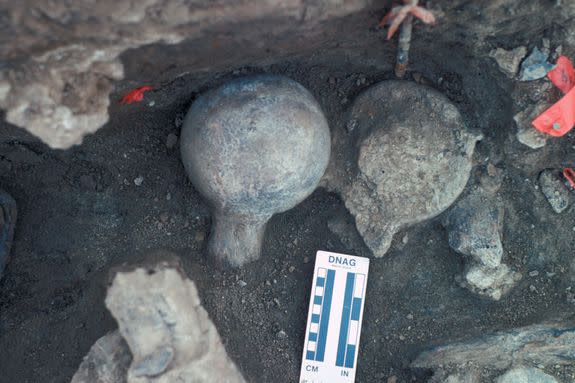Humans may have lived in the Americas 130,000 years ago, far earlier than thought

Ancient remains found in California suggest that humans were present in North America some 130,000 years ago — substantially earlier than scientists previously thought.
A site in San Diego contains evidence that early human ancestors smashed mastodon bones and teeth to make rudimentary tools. The smattering of bone fragments, hammer-stones, and anvils now represents the oldest archeological site in the Americas, according to a study published in the journal Nature on Wednesday.
The oldest widely accepted date for humanity's presence in North America is less than 15,000 years ago. If the findings are true, this would make the San Diego site older by a factor of nearly ten, the study found.
SEE ALSO: A 400,000-year-old fossil offers new clues on how humans evolved
"Extraordinary claims like this require extraordinary evidence, and we feel that the Cerutti Mastodon site [in San Diego] preserves such evidence," said Thomas Deméré, the study's corresponding author and curator of paleontology at the San Diego Natural History Museum.

Image: San Diego Natural History Museum
Some outside experts said they were deeply skeptical that the site is as old as the scientists claim, or that the mastodon bones show definitive signs of human activity.
"I was astonished, not because it is so good but because it is so bad," Donald Grayson, an archaeologist at the University of Washington, told the New York Times. He faulted the study for failing to rule out other explanations for markings on the bones.
John McNabb, an archeologist at the University of Southampton in England, said the study raises more questions than answers. In a commentary published in Nature, he said that, to prove this is truly evidence of human activity, more information is needed about how people even arrived there so long ago.
But archeologist Erella Hovers agreed the study "points to a much earlier arrival of human relatives" than previous studies suggest.
The new finding "has been rigorously researched and presented," Hovers, a professor at the Hebrew University of Jerusalem, wrote in a commentary for Nature. However, the scientists' proposed narrative about the bone data "has some gaping holes that need filling," she added.
The study's authors said they don't know which kind of early human ancestor was responsible for the bone breaking, since no human remains were found at the site. They also don't know how humans arrived in southern California, though they might've crossed the Bering Strait or traveled in a water craft from Asia.

Image: san diego natural history museum
Deméré and his colleagues acknowledged the skepticism toward their study. But they defended their results on a Monday call with reporters, noting the study was the result of more than two decades of research.
San Diego paleontologists first discovered the mastodon bones and rock tools in 1992, during a routine survey at a freeway construction site.
Using an excavator, scientists dug nearly 10 feet below the surface to uncover the remains, which neither geological forces nor human activity had disturbed in over 100,000 years, said Steve Holen, the study's lead author and director of research at the Center for American Paleolithic Research in South Dakota.

Image: San diego natural history museum
Deméré said back then, the site likely sat near a meandering stream near the coastline, the landscape filled with extinct Ice Age megafauna, including camels, horses, and deer. Today, the dig site is part of a sound berm on the north side of a San Diego freeway.
Mastodon rib bones, vertebrae, and femurs showed distinct fracture lines that suggest they were broken while fresh — not run over by a truck or demolished by nature millennia later. Other bone and molar fragments showed evidence of being hit with hard objects, while five large hammer-stones and anvils at the site show signs of wear and tear that could only come from human interference, scientists said.
To verify their findings, the team conducted two experiments on elephant bones using large rock hammers and anvils, and produced the same types of fracture patterns.
"People were here breaking up the limb bones of this mastodon ... probably to make tools out of, and they may also have been extracting the marrow for food," Holen said. He noted that human ancestors in Africa used this same approach on elephant limb bones some 1.5 million years ago.
"As humans moved out of Africa and across the world, they took this type of technology with them," he said.
Researchers studied the bones and archeological evidence for years. But it wasn't until recently that they were able to accurately estimate the date of the site.
James Paces, a research geologist with the U.S. Geological Survey and co-author of the new study, used uranium-thorium dating from multiple bone specimens to determine their approximate age. He estimated the bones were about 130,000 years old, plus or minus 9,400 years, based on the distribution of naturally occurring uranium and its decay products.
He said other methods, such as radiocarbon dating and luminescence dating — which measures the amount of light emitted from energy stored in rocks — had failed because of the bones' condition.
"We now have a robust, defensible age for early humans being present in North America more than 100,000 years previous than what people had imagined," Paces told reporters.
